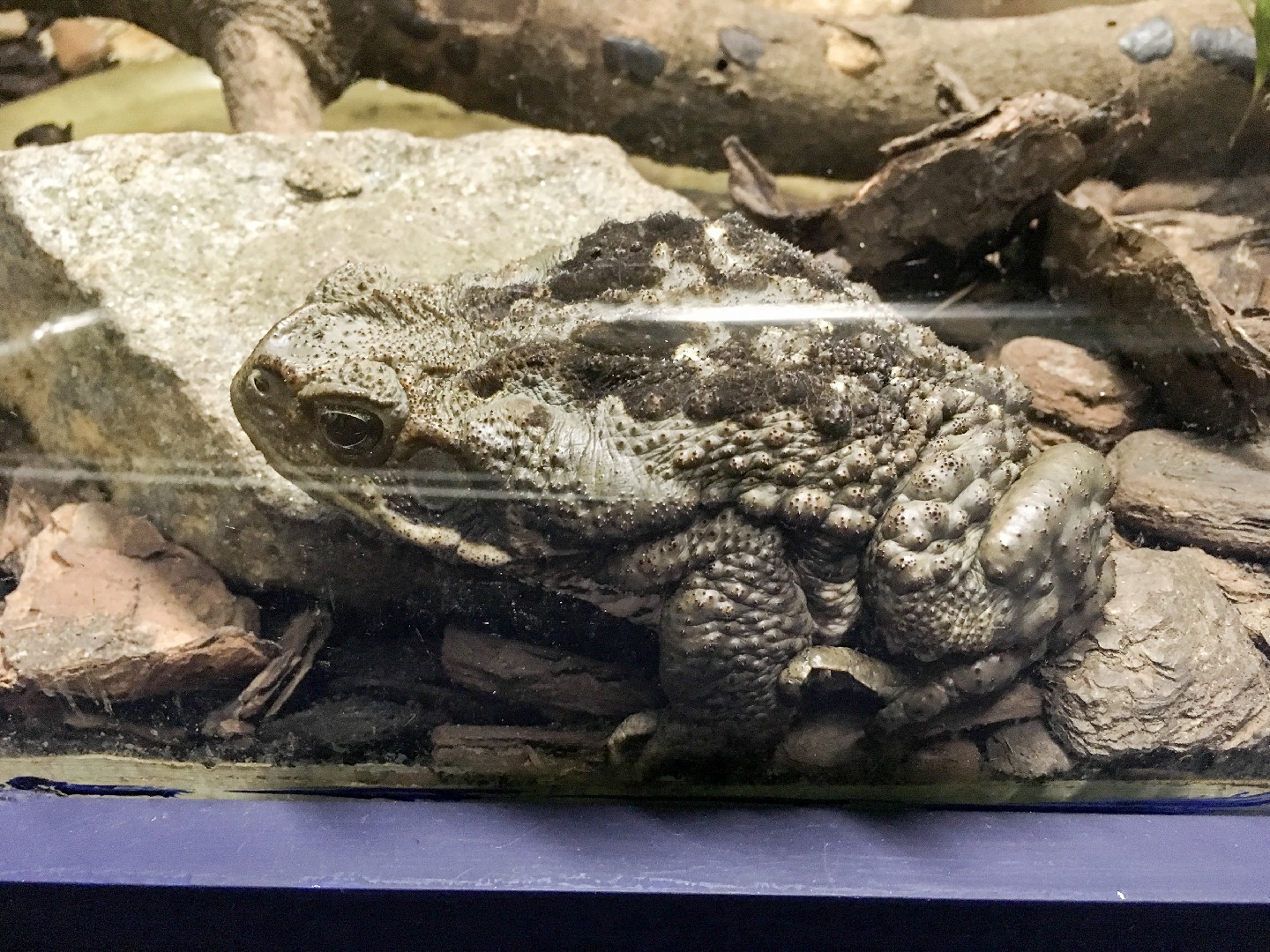Cururu toad
A species of South american toads Scientific name : Rhinella jimi Genus : South american toads
Cururu toad, A species of South american toads
Scientific name: Rhinella jimi
Genus: South american toads
Content
Description General Info
 Photo By Mike Peel , used under CC-BY-SA-4.0 /Cropped and compressed from original
Photo By Mike Peel , used under CC-BY-SA-4.0 /Cropped and compressed from original Description
Rhinella jimi is a stout and large toad. Adult males measure on average 147 mm (5.8 in) and adult females 134 mm (5.3 in) in snout–vent length. The holotype, an adult male measures 171 mm (6.7 in). The tympanum is distinct. The head has many cranial crests. The parotoid glands follow the supra-tympanic crests. Males have moderately strong arms, while they are slim in females. The fingers have no webbing. The legs are short and robust. The toes are fringed and have basal webbing. Dorsal skin is covered by many tubercles of different sizes. Males have keratinized spines on the dorsum, flanks, and upper surfaces of limbs. Preserved specimens are grayish beige above, mottled with dark brown spots. The parotoid glands have a more orangeish tint. The ventrum is lighter beige than in dorsum. The head is very dark, from brown to nearly black. 
General Info
Lifespan
10-15 years
Diet
Cururu toad predominantly feeds on a diet of small invertebrates, particularly insects. The species showcases a preference for ants and termites, often detected through its exceptional olfactory and auditory abilities.
Appearance
Cururu toad is a moderately sized toad with a broad and robust body covered in dry, warty skin. Its primary color is a mottled greenish-brown that provides perfect camouflage in its natural habitat. Cururu toad has a large head with a noticeably pointed snout and two well-developed parotoid glands behind its eyes. It is distinguished by its elongated hind limbs with webbed toes.
Behavior
Cururu toad is a primarily nocturnal species, often seen hiding during the day in moist and shady areas. It exhibits solitary tendencies, interacting with others primarily during mating seasons. This species is not known for specific territorial behaviors, and tends to be nomadic, frequently changing habitats depending on available moisture. Its distinctive call, a long, trilling whistle, is a key part of its communication repertoire.
Population
Stable
Scientific Classification
Phylum
Chordates Class
Amphibians Order
Frogs and toads Family
True toad Genus
South american toads Species
Cururu toad